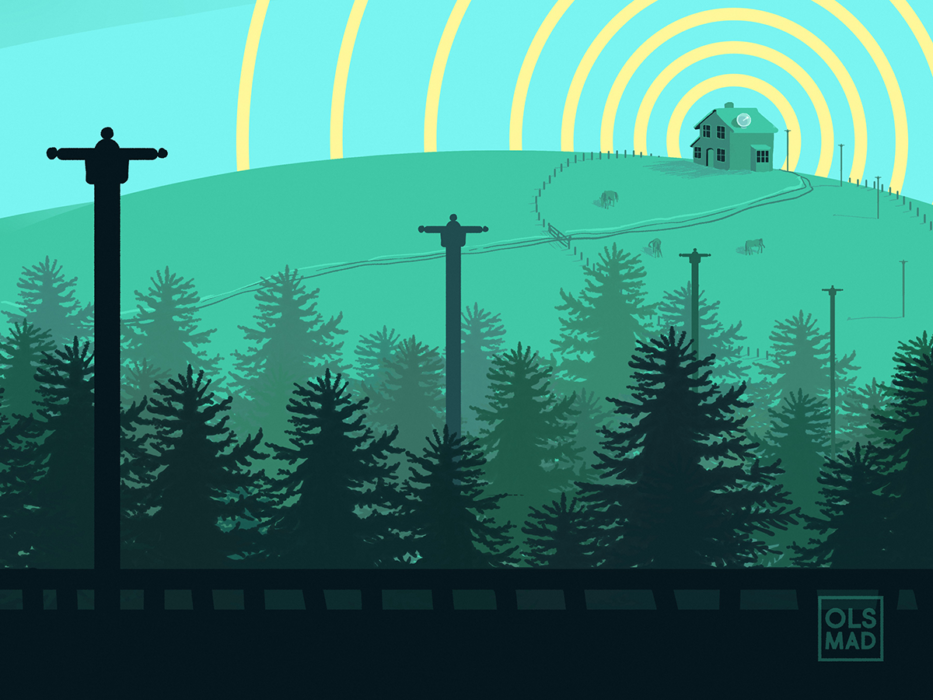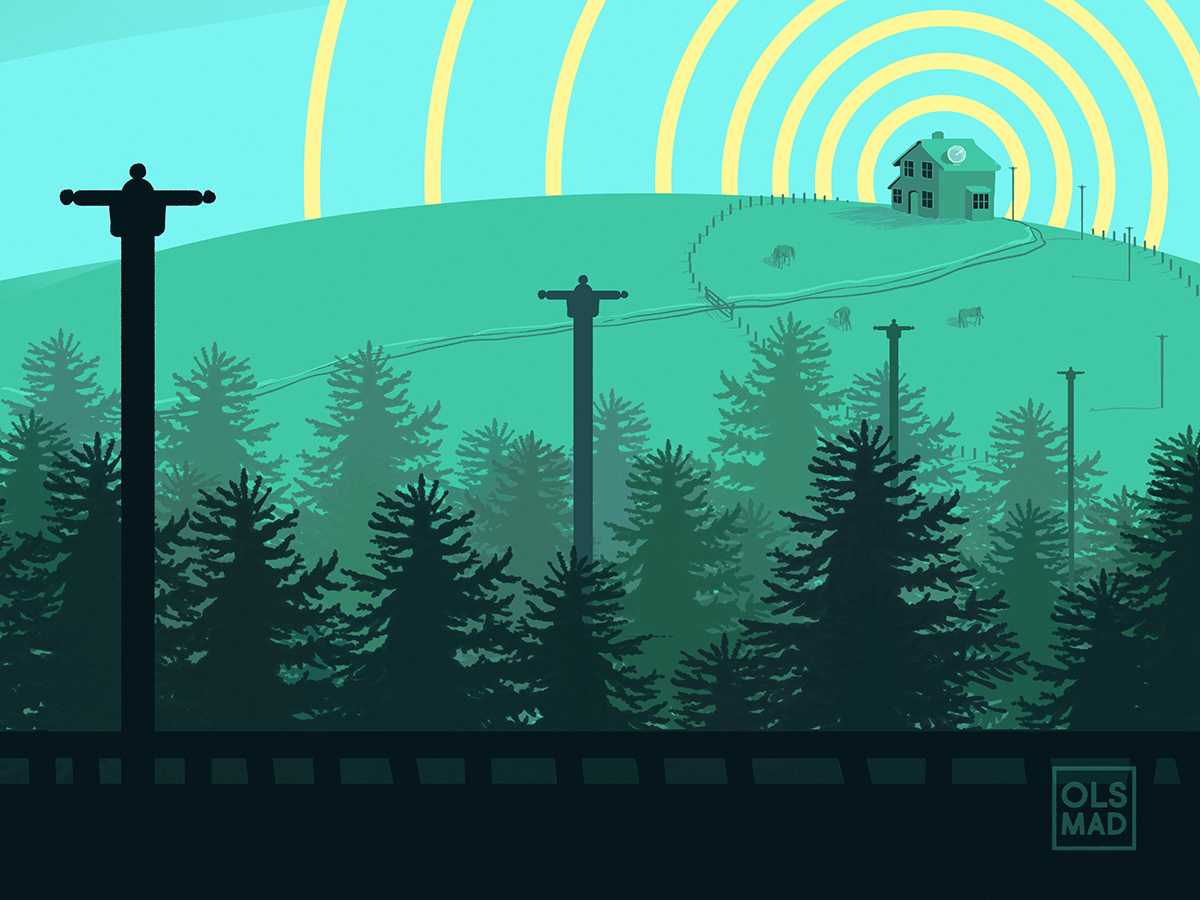
Among the inequalities exacerbated by COVID-19, Microsoft President Brad Smith would put internet access near the top of the list. Millions of Americans are stranded with unreliable connections that make online learning or work difficult, if not impossible. According to BroadbandNow, a consumer advocacy site, more than 42 million Americans lack access to high-speed internet, and the problem is most acute in rural areas.
Since 2017, Microsoft’s Airband Initiative has connected 1.2 million people to broadband internet in rural areas, and the goal is to add another 1.8 million by 2022. That’s all well and good, but amid an outbreak that makes online work more important — not to mention safer — Smith argues Congress and the private sector alike need to quicken the pace of broadband expansion.
“It’s time to galvanize the nation and recognize the obvious. Broadband has become the electricity of the 21st century,” Smith wrote in a blog post. (Microsoft declined an interview request.)
Fortunately, there are useful models companies and lawmakers can draw upon — one that expanded electricity availability during the Great Depression, and another that some towns are using to get more people access to affordable internet today.
A lot of folks lacking broadband live in the rural West. Alaska, Montana, New Mexico, and Wyoming have among the worst internet options in the country, per a BroadbandNow analysis, especially when it comes to affordability. In Montana, for instance, 72 percent of residents have access to broadband, but only 0.7 percent can get the service for $60 a month or less. By comparison, 94 percent of California residents can get broadband speeds, and 70 percent have access to affordable plans.
Having a speedy internet connection isn’t trivial. As University of Virginia professor Christopher Ali has noted, broadband props up rural areas by boosting economic development. It improves public health by facilitating telemedicine and, nowadays, social distancing. It gives folks the option to work or study remotely, and can improve emergency response times.
Yet a lack of rural broadband options persists, and the private sector has little reason to fix it. For one, giving everybody broadband speed, which the federal government defines as 25 megabits per second download and 3 upload, would cost $80 billion according to the Federal Communications Commission; consulting firm Deloitte thinks it’d cost $150 billion. That’s a lot of coin for Comcast, CenturyLink, or other internet providers to throw down to reach a relatively small number of customers.
That’s where the federal government could come in, and it has experience disposing of a similar problem. From 1935 to 1940, the Rural Electrification Administration, a New Deal program, subsidized the construction of 250,000 miles of power line that brought electricity to 956,000 farms. According to Price Fishback, a University of Arizona economist who studies the New Deal, the REA was among the most efficient of the stimulus programs rolled out by Franklin D. Roosevelt during the Great Depression. Nearly all of the low-interest loans — which totaled $4.23 billion in today’s dollars — were paid back, and government-funded research helped decrease the price of electrical infrastructure.
Much like today’s internet service providers, electric utilities of the time thought the program would be a financial boondoggle. But the REA had a workaround: electric cooperatives.
“Most of the utilities didn’t bite on the loans, so the REA came up with these designs for the co-ops,” Fishback said in an interview. “Once the REA set up a structure, you just had to get a group of farmers together to vote to do this. … And they’d get a really cheap loan, and access to electricity.”
Fishback’s research shows that the economic decline during the Depression was less severe in areas that participated with the REA. A big reason: the farms were more productive. Electricity allowed them to pump irrigation water, and heaters increased the size and hatch rate of chickens. Lighting in pig pens reduced trampling; one piglet saved usually was enough to offset the cost of electricity for a year.
REA-era co-ops lasted well beyond the Depression. Today, they maintain more than 40 percent of the nation’s power lines. My grandfather was a lineman for decades with the electric co-op in Big Horn County, Wyoming, which was seeded with an $82,000 REA loan in 1937.
A similar model could work to expand broadband today. The feds, after all, are already spending big money: the FCC’s Rural Digital Opportunity Fund will dedicate $20.4 billion over the next 10 years to improve rural broadband access. Much of that money — $16 billion — is dedicated to census blocks that have no broadband providers whatsoever, and any telecom firm taking FCC money must construct and maintain lines that meet the 25 Mbps standards.
Internet access advocates take issue with the FCC’s methodology, though. For one, the federal standard is relatively slow — experts would prefer 100 Mbps download speeds delivered through fiber-optic cable — and doesn’t require low-price options. In addition, the FCC’s approach leaves out the many rural areas with just one internet provider. The agency argues it is directing spending in a way that prevents “overbuilding” of networks, but that can facilitate regional monopolies where solo providers have no competition.
“The difference is fundamental,” Kevin Taglang, an analyst with the Benton Institute for Broadband & Society, has written. “Overbuilding asks whether the dollars spent to build another network are necessary for the delivery of a communications service; economics asks whether spending those dollars will lead to competition that allows consumers to spend less and get more.”
Longmont, Colorado, illustrates that principle. It may not be a rural area, but Longmont — a town of 86,000 north of Denver — shows the potential for taxpayer-funded municipal broadband, a system more akin to the electric co-ops born in the 1930s than corporate internet service providers. In 2014, the city fired up its NextLight fiber-optic network that is among the nation’s fastest. The service has a market share approaching 60 percent, and its competitors have slashed their own prices.
Because it’s a municipal entity, NextLight has the flexibility to offer various pricing options. Residents can sign up for gigabit internet — up to 40 times faster than the federal standard — at $70 a month; stay on for a year, and the monthly price drops to $60. Low-income residents are eligible for a $15 per month plan, and students that qualify for free or reduced-price lunch can get their homes connected for free.
“That means everyone in the community truly has equal access to high-speed internet, regardless of where they live,” Valerie Dodd, NextLight’s executive director, told me.
Getting municipal broadband was a battle, though. Many states, at the behest of big internet service providers, won’t let cities set up their own telecommunication systems. Longmont voters had to pass a referendum exempting the city from just such a measure in Colorado. And Dodd said rural areas probably couldn’t even consider laying down fiber without federal subsidies.
That’s why an REA-style program, one that works with co-ops and municipal systems, could usher in a rural internet revolution akin to the Depression-era electrification initiative. “You can’t just get the private sector to do it,” Fishback said. “So [broadband is] an area where the government could step in. And you could do it any time — it doesn’t have to be because of COVID-19.”
Smith, Microsoft’s president, harkened back to the New Deal as well. “Well before the end of the 20th century, we recognized that no American should live without electricity,” he wrote. “As we embark on the third decade of the 21st century, every American deserves the opportunity to access broadband.”

